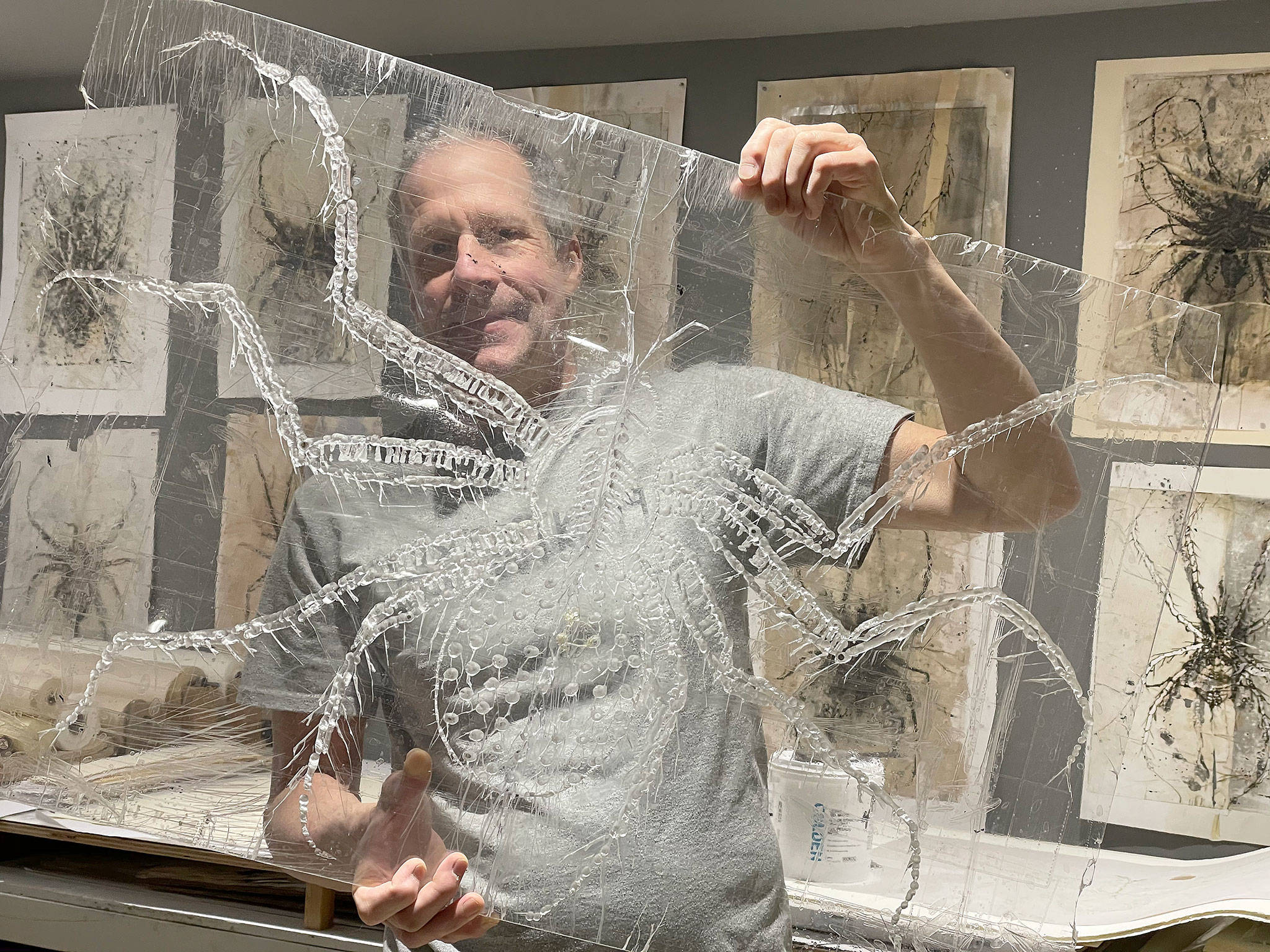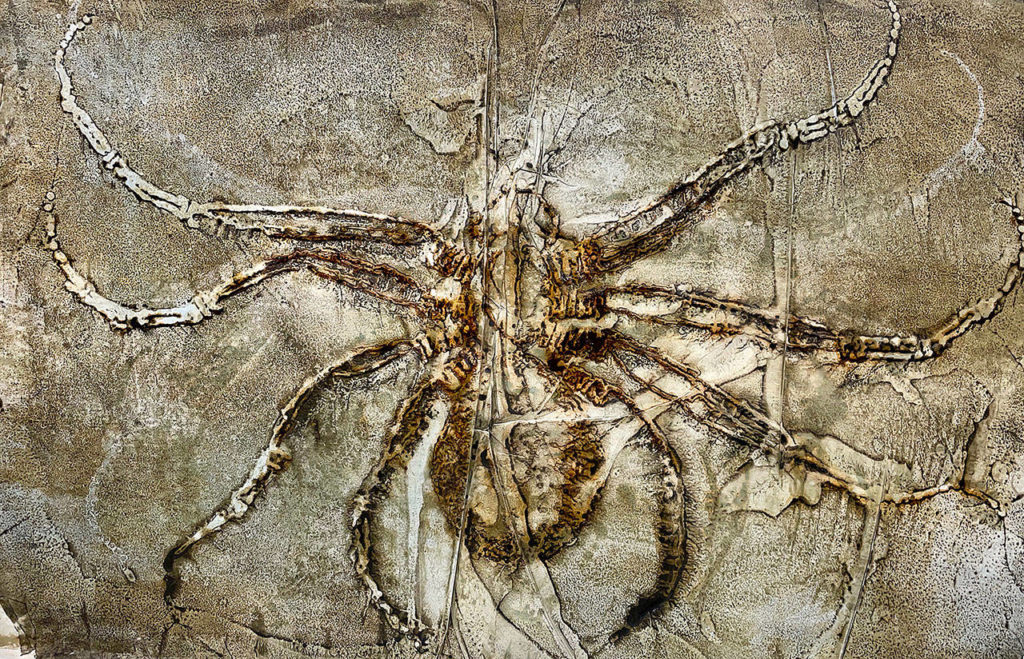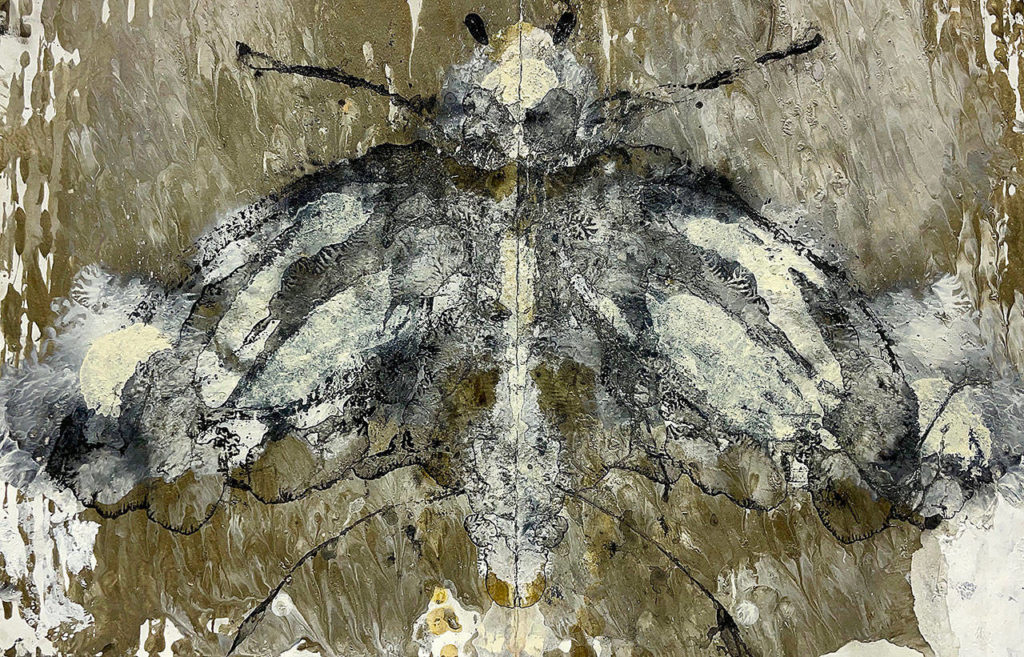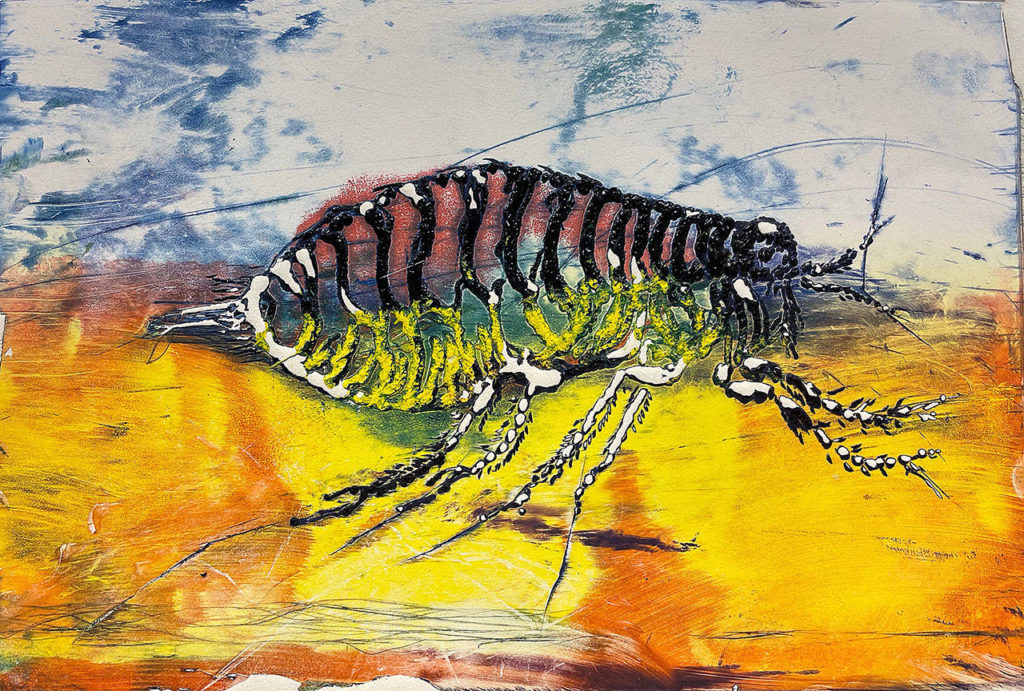Who: My name is Curt Labitzke. I’m 62 years old and have been making art for more than 40 years. In addition to being an artist, I also teach printmaking at the University of Washington where I have been the chairman of printmaking since 1984.
I grew up in a family of makers. My mom is a quilter and stained-glass artist, and my dad was an illustrator and designer for a large advertising firm in New York City before going freelance in the mid-1970s. He was also a painter, mostly aeronautical scenes from World War II, but also images from our vacations to the Poconos in the summer, like covered bridges and landscape scenes.
The first real art job I had was assisting my dad by tracing, copying, enlarging and reducing images by hand, all pre-computers and even Xerox copiers. Once pencil sketches were finalized to scale, he would paint them in. My next art job was in junior high school, painting album covers of my friends’ favorite bands on the backs of their well-worn denim jackets. This kept me busy through high school and taught me many useful reproductive drawing and painting skills.
I have a wonderful partner, Kay, who works for Snohomish County in the Early Childhood Education Assistance Program. She’s a sewer, a serious plant person and an awesome cook. We have two beautiful kids, both influenced by the arts. We also have a brand new grandson named Dari. Our daughter, Jasmine, did her undergraduate work in art history at UW and works for a tech company in Los Angeles, where she uses her research and writing skills daily. Our son, Miles, teaches studio art and printmaking at Everett Community College, where he manages Russell Day Gallery.
What: I’m a print artist who specializes in making hand-pulled intaglio-style prints using an etching press. I became fascinated with this 15th-century technique as an undergraduate student.
As a freshman, I was majoring in forestry, but needed a core class credit in the humanities to graduate. I happened to be taking a drawing class my freshman year, since I thought it would come naturally and be easy. It was not. I struggled with a class taught by one of my early mentors, which involved drawing everything from live roosters to complex arrangements of thousands of objects stacked on top of each other in precarious ways. Every day, I would walk past the printmaking studios to get to my drawing class, peer inside and watch others using the press and laying out inks, which always had this comforting and appealing sweet smell. By the next semester, I had changed my major to art. I had no idea where making prints would take me, but I knew I loved it and still do today.
When: I try to be in the studio every day. I tell my students to make art from their life experiences, and for me this has always been inspired by travel, nature and my background in the sciences, as brief as it was.
My interest in insects and botanical subjects began in school while helping my now-wife collect insects for an entomology class she was taking the first summer we met. Forty years later, I found one of our old bug box collections and started looking at them more carefully, which is partly how I got to where I am now. My source of inspiration is through direct observation and referencing a collection of entomological and botanical antique prints I have accumulated over the years. My bugs are my own invention, often combining favorite parts of different creatures or simply making up something that looks like it could be real. I do work with other subjects as well, in particular the human figure and a long-standing series of imaginary portraits inspired by the Baroque and figurative works from my travels in Italy. This includes ancient frescoes from places like Pompeii and early Roman portraits in paint and stone.
Where: I make most of my work at my studio just outside of Snohomish, where we live on a small piece of wooded property. My ideal was always to find a way to integrate my artistic practice into my life, something I feel strongly about. My commute to work these days is about 15 steps, which means I can find time to be in the studio all times of the day.
Currently I teach a remote course entitled “Printmaking Without a Press” from my kitchen via Zoom, which at first was quite challenging, but has become very rewarding.
I also offer study-abroad opportunities for students, having taught more than 25 programs over the years in Rome, Florence, Spain, London and Paris. These trips and the artworks along the way have contributed greatly to my own work in many ways.
I show my work at The SAM Gallery, Zinc Gallery in Pioneer Square and The La Bottega Gallery in Laguna Beach, California. Folks can also visit the studio in Snohomish to see the newest works.
Why: I’m not really sure why, but why not? I don’t think art or art making has to be justified or defended. At the moment, it’s all about spiders, fleas, ticks, mosquitoes and all the little creatures we have a fear and fascination of. I mostly tend to be interested in parasitic pests and how we learn to co-exist with them. I read once that every creature on the planet has benefits to the environment with one exception, the mosquito.
But still, my work over the past two years has been focused on spiders and mosquitoes. I’ve probably made more than 1,000 prints over this time.
The spider has always held a fascination over us: It lives in our stories, our dreams and our collective consciousness. I’m fascinated by how pervasive the spider is in our culture and how often it is used as a reference for everything from persistence and patience, to creativity and work ethic. I really enjoy these references; just think of Spider-Man, Harry Potter, “The Hobbit,” “Charlotte’s Web,” “The Itsy Bitsy Spider” and “Little Miss Muffet,” to name a few. Not to mention folktales, mythology and all the wonderful archaeological artifacts throughout all cultures that reference the spider, my favorite being the large earthen spider found on the Nazca Lines of Peru.
In my spiders, I hope the viewer finds their own references and ways to live with them. Not everyone sees the same things when viewing an image, which is what makes art so fascinating. And not everyone wants a 3-foot spider on their wall, but there are those who are attracted to them as well.
How: It doesn’t matter how, it just matters that you do. I have chosen printmaking, and in particular intaglio printing, for many reasons, some of which I know; others still seem to be a mystery. As I mentioned earlier, the smell of oil-based inks and the thought of seeing an image for the first time seem to be enough.
My prints are developed in three stages. First, there is the research and development stage, where I usually reference other found images and objects using them to create a series of drawings in full scale. Next, these drawings are transferred and carved into Plexiglas plates using a variety of hand and power tools. The spider images are carved quite deeply, sometimes right through the plate and out the back side. All the plates in the series are designed to nest or print over the top of each other, enabling me to register them to each other, creating spiders made up of combinations from different plates.
This last series contained 11 carved plates, so there are lots of different combinations possible, often creating images that look like they are moving, similar to stop-motion photography. The Plexiglas plates are printed by pushing ink into the deeply carved areas and wiping the surface of the plate clean using rags and paper. A variety of rollers are also used to deposit inks in flat planes on the top surface of the plate. The plates are then run through a press and printed onto papers that I usually build by collaging, taping and gluing smaller pieces of paper together to create irregular, worn and sometimes tattered surfaces which act as documents of the process.
I’d like these prints to feel like they came from the back room of some forgotten natural history museum or collection from hundreds of years ago. I suppose I’m really interested in making future anthropological or archaeological objects reminiscent of fossils or artifacts. I’ve always thought burying these printed objects in a time capsule for future generations to find would be the perfect place for them to end up.
As I tell my students: Keep on printing.
Favorite print: “Colourful Flea” has a special place in my heart. It is a multicolor print made using an intaglio process called viscosity printing that involves using multiple rollers with different colors over a deeply etched, hand-drawn image of a flea. This particular process is known for creating spontaneous and surprising color effects through the ink films mixing directly on the surface and often yields unexpected color combinations. In my work, I tend to select colors that emulate more of a natural environment or are drawn from observation, but in this print the extravaganza of color seems to change the idea of what a flea is into something playful and beautiful.
More: See more of Curt Labitzke’s art at www.facebook.com/curtlabitzke or email curtlabitzke@gmail.com to set up an appointment to visit his Snohomish studio.
Andrea Brown: abrown@heraldnet.com; 425-339-3443. Twitter @reporterbrown.
An artist on exhibit
This story is part of an occasional series in which local artists share the Who, What, When, Where, Why and How on their creative careers — plus the story behind their favorite original artwork. Do you know an artist worthy of a feature in the Panorama section? Email features@heraldnet.com.
Washington North Coast Magazine
This article is featured in the spring issue of Washington North Coast Magazine, a supplement of The Daily Herald. Explore Snohomish and Island counties with each quarterly magazine. Each issue is $3.99. Subscribe to receive all four editions for $14 per year. Call 425-339-3200 or go to www.washingtonnorthcoast.com for more information.
Talk to us
> Give us your news tips.
> Send us a letter to the editor.
> More Herald contact information.




























